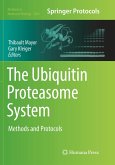Herpes Simplex Virus Type 1 is a human pathogenic virus that affects people worldwide causing cold sores, encephalitis, blindness, and death. On the molecular scale, HSV-1 usurps numerous cellular processes in favor of its own. The proteasomal degradation pathway is the main route of protein recycling and breakdown in the cell. This process leads to the formation of new proteins and produces peptides of appropriate length for display to the immune system. The work contained here focuses on the formation and function of various proteasomal components and structures during and in response to HSV-1 infection. MicroRNAs are 20-26 nucleotide RNAs which mediate transcriptional silencing in mammalian cells. DNA viruses have evolved to produce microRNAs that function to repress cellular transcription or viral transcription. Herein, HSV-1 produced microRNAs are described and the consequence of their production on viral growth are detailed.







